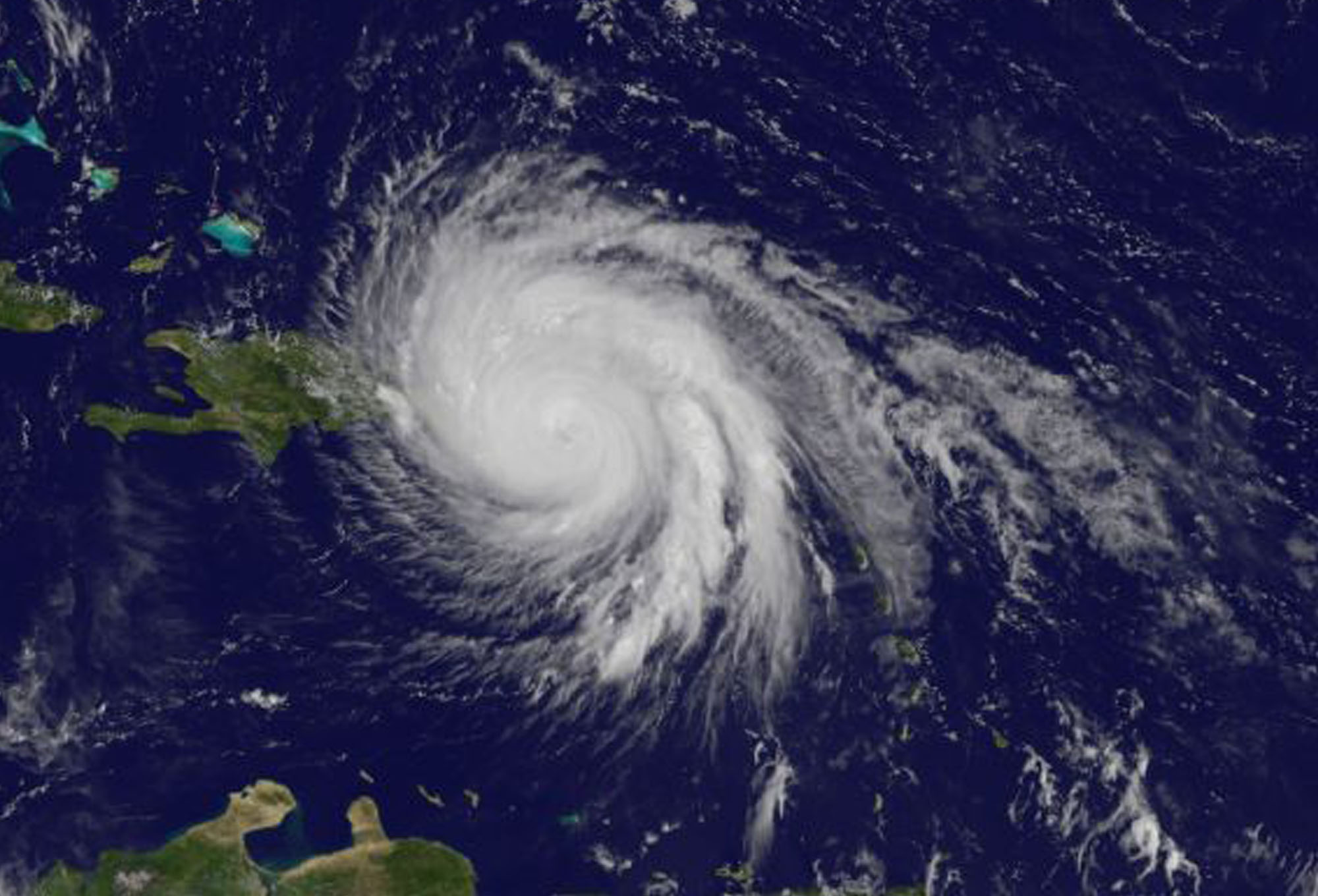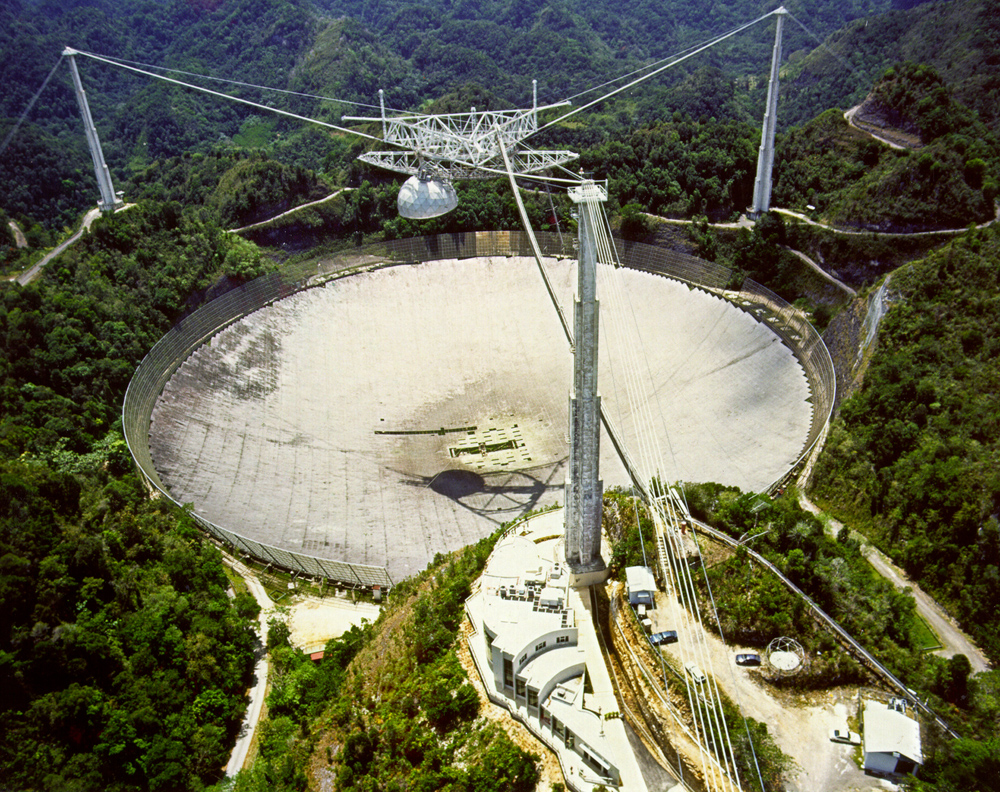Hurricane Maria Slams Puerto Rico's Arecibo Observatory

Hurricane Maria hit Puerto Rico Wednesday (Sept. 20), battering the U.S. territory with heavy winds and torrential rainfall. Now that the worst of the storm has passed, staff at Puerto Rico's Arecibo Observatory are preparing to start surveying the damage.
The Arecibo Observatory is located on the northwest side of Puerto Rico and contains the second-largest radio telescope in the world, a dish 1,000 feet (305 meters) wide. While the telescope is perhaps best known for its work on the search for extraterrestrial intelligence, it performs a wide range of astronomical research, including scanning the sky for potentially hazardous near-Earth asteroids.
When Maria made landfall Wednesday morning (Sept. 20), the National Hurricane Center (NHC) called the storm an "extremely dangerous" Category 4 hurricane. The center of the hurricane passed northeast of Arecibo early in the afternoon. [In Photos: Hurricane Maria Seen from Space]
By the time the eye of the storm had crossed Puerto Rico at 2 p.m. EDT (1800 GMT), Maria had been downgraded to a Category 3 hurricane. Still, the NHC said Maria "is expected to remain a dangerous major hurricane through Friday."
Fortunately for the Arecibo Observatory, it is located more than 1,000 feet (300 m) above sea level, so flooding from the storm surge did not affect the facility. On much of the rest of the island, flash flooding and mudslides were widespread. The NHC said water levels would rise up to 9 feet (2.7 m) aboveground.

Though the storm surge might not be a problem, Arecibo's dish is still expected to be soaked with up to 25 inches (64 centimeters) of rain by Friday.
Strong winds may also be a concern: Above the telescope's dish is a triangular platform suspended from three concrete towers, and vital telescope equipment sits on top of that platform. Flying debris could damage some of that structure. The NHC reported wind speeds as high as 155 mph (250 km/h), which is almost strong enough to classify Maria as a Category 5 storm. (The Safer-Simpson Hurricane Wind Scale defines a Category 5 hurricane as a storm with sustained winds of at least 157 mph, or 252 km/h.)
Get the Space.com Newsletter
Breaking space news, the latest updates on rocket launches, skywatching events and more!
A spokesperson for the National Science Foundation (NSF), which manages the Arecibo Observatory, told The Washington Post that "all on-site staff were safe as of 8 a.m. Wednesday." The observatory closed on Monday (Sept. 18) as Puerto Rico braced for the hurricane.
On Thursday (Sept. 21), the facility will reopen to some staff, who will then begin to assess the damage. The visitor center will remain closed through next Wednesday (Sept. 27), Arecibo representatives said on Twitter.
"If conditions are good and the road to the observatory is clear, the NSF hopes to resume normal scientific operations Friday," The Washington Post reported. For now, all of Puerto Rico is without power, the observatory's phone lines are disconnected and the observatory's website (www.naic.edu) is down.
Stay tuned to Space.com for more updates on the Arecibo Observatory and the damage from Hurricane Maria.
Email Hanneke Weltering at hweitering@space.com or follow her @nanoscience. Follow us @Spacedotcom, Facebookand Google+. Original article on Space.com.
Join our Space Forums to keep talking space on the latest missions, night sky and more! And if you have a news tip, correction or comment, let us know at: community@space.com.

Hanneke Weitering is a multimedia journalist in the Pacific Northwest reporting on the future of aviation at FutureFlight.aero and Aviation International News and was previously the Editor for Spaceflight and Astronomy news here at Space.com. As an editor with over 10 years of experience in science journalism she has previously written for Scholastic Classroom Magazines, MedPage Today and The Joint Institute for Computational Sciences at Oak Ridge National Laboratory. After studying physics at the University of Tennessee in her hometown of Knoxville, she earned her graduate degree in Science, Health and Environmental Reporting (SHERP) from New York University. Hanneke joined the Space.com team in 2016 as a staff writer and producer, covering topics including spaceflight and astronomy. She currently lives in Seattle, home of the Space Needle, with her cat and two snakes. In her spare time, Hanneke enjoys exploring the Rocky Mountains, basking in nature and looking for dark skies to gaze at the cosmos.









